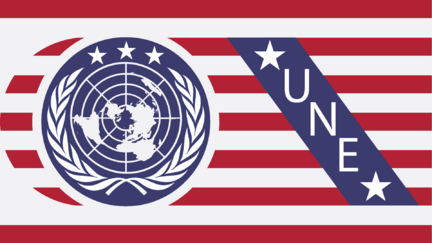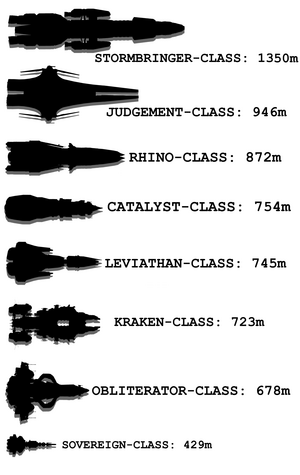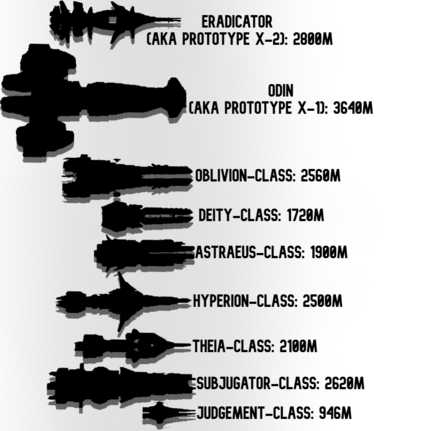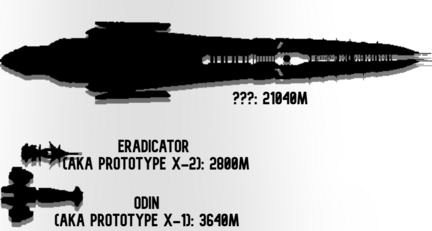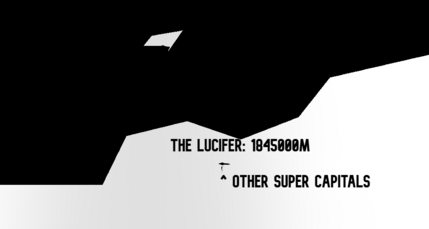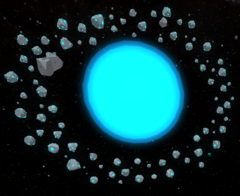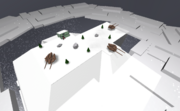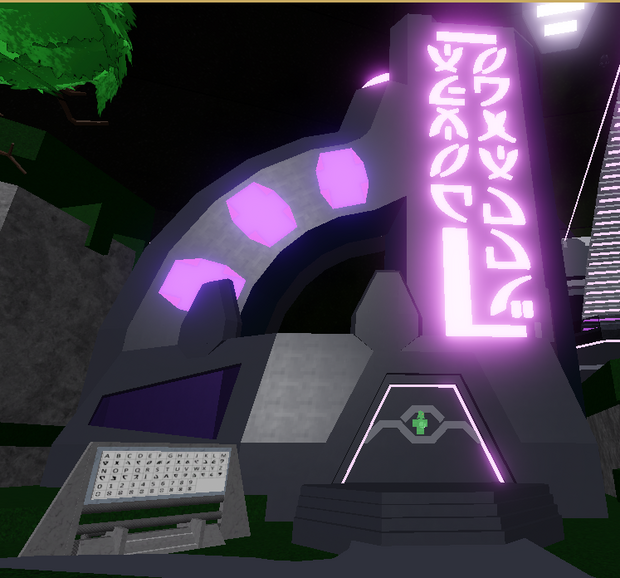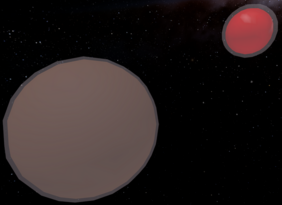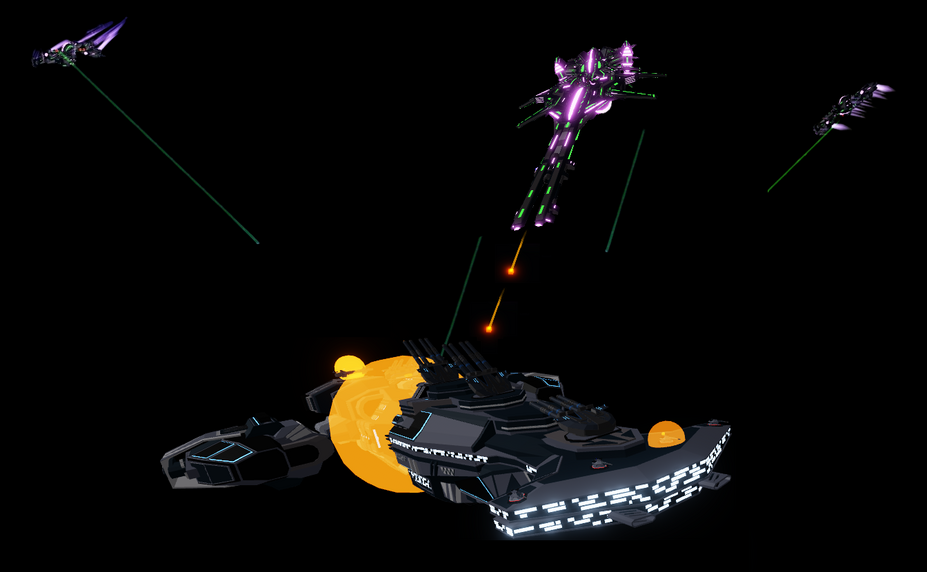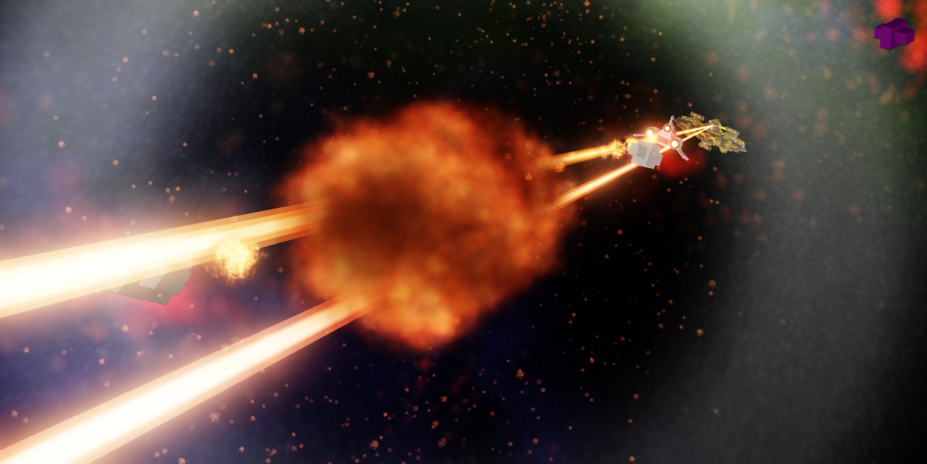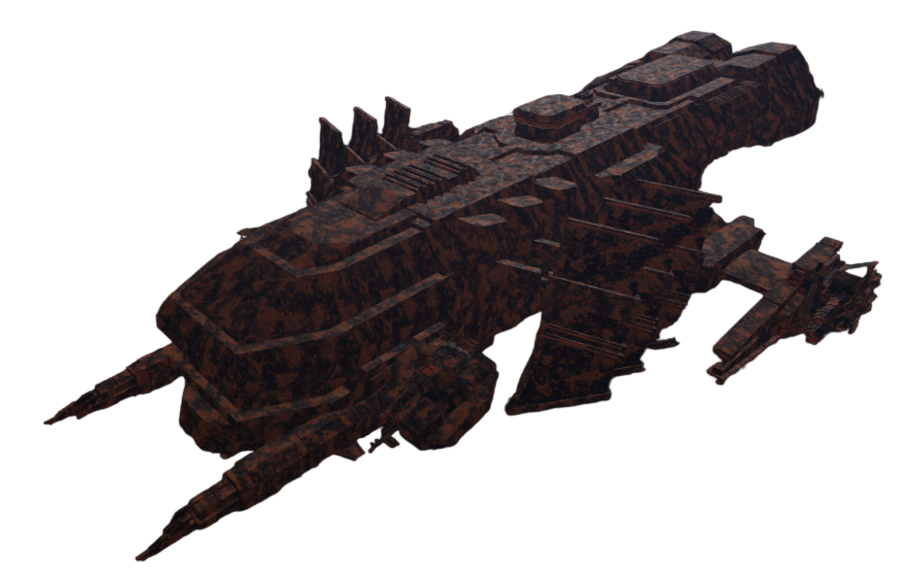U.N.E Lore
Lore
Written by Sean Morabito.
Timeline
Temporary timeline
-200,000-600,000 years ago the Precursors disappeared.
-late 1800's and early 1900's: Kneall first expanded outside their solar system
-2460: Kneall empire falls into a civil war
-2470: Slarfie separates from the Kneall
-3000: Humans first leave our solar system to escape a resource shortage on Earth and Mars
-3040: Humans begin developing the first permanent space stations stations outside of planetary orbits
-3050: First contact with the Kneall
-3055: Founding of the UNE
-3070-3100: Kneall contact slowly increases in frequency as human expansion continues and the they gain awareness of human presence, Kneall aggression becomes more common
-3105: NAUTA is created
-3110-3125: Open war against the Kneall begins in 3,110, marking the beginning of the first Human-Xeno war and lasting for 15 years
-3140: Osiris Legion becomes one of three military superpowers among humans . (the other two are NCU and UNE)
Also 3140: First contact with the Slarfie
-3180: Slarfie and UNE enter a mutual defense pact, strengthening economic ties and granting more power to fight against enemies
-3200: Massive Kneall fleet enters human controlled systems without warning, an industrial complex planet before a response fleet was able to gather and engage the enemy, marking the beginning of a the second Human-Xeno war, lasting 30 years
-3230: war ends
Still looking for where current year galaxy is
Rough background of humans in space:
-Resource shortage on Earth from poor management of resources, the year is 3,000
-Political conflicts over resources and U.S. comes out on top
-Nasa makes an expeditionary spaceship to travel the galaxy in search of habitable worlds and available resources
-Ships are sent out into a resource rich system once it was found and start establishing permanent, space-bound infrastructure
-At first, rather than settle permanently on a habitable world, humans stay in space constructing starbases and structures while mining comets and asteroids for the necessary materials to suit their needs. Later on some planets are terraformed or settled on permanently.
United Nations of Earth
By the year 3383, the Earth had been ravaged of its natural resources. Scarcely any of the planet's mines had been left untouched. The Earth was bled dry, pits and shafts stretching deep into the crust, bare of any minerals or fuel. Many industries on Earth fell into ruin, unable to support themselves due to excessive energy costs and pitifully low production rates. The crisis continued to intensify at an alarming rate, but just as the worst economic and resource depression in history loomed at the edges of human society, a spark of hope shone from NASA: An asteroid system filled with countless valuable resources had just been discovered not far from Earth. Every pure element humanity could have ever needed could be found there, and even some that humanity never thought they may need. Thus, a new age dawned on Earth. Soon after this amazing news, frivolous work and research were started on interstellar space travel, beginning with the initiation of NASA's Interstellar Space Program, also known as the I.S.P. After the economic collapse, crowds of people desperate for work flocked from all around the globe. This immense workforce allowed the first mission of the I.S.P., Project Constellation, to be launched just a few years after the program's initiation. Project Constellation saw enormous success. This gave NASA a glimpse of the true potential in continuing such advancements in technology, inspiring them to redouble their effort in research and engineering. A mere decade later, fully equipped mining and cargo ships were ready to launch towards the asteroid field. Christened “The Voyager Armada,” all ships within the fleet were equipped with brand new warp drives, which had been developed only a few years prior. This huge technological advancement shortened the original travel time to the asteroid field from 36 years to mere hours.
Soon after the voyage was underway, the majority of governments on Earth realized that if the fleet were to encounter an entirely different species, they would need to have a unified representation of their people. An invite was sent to every leader on the globe, and the largest meeting of world leaders ever recorded was held at the United Nations headquarters in New York. The result was the emergence of the United Nations of Earth (U.N.E.), a unified global government with representatives from nearly every nation. The first project headed by the U.N.E. council was the construction of a space station to serve as a base of operations and refueling for all future missions, as long-distance travel and delivery were still extremely costly. The base was constructed over a period of 3 years, and after completion it became the central hub for miners and traders in the asteroid field area.
Aqueous II was originally discovered by a stray miner that wandered far off-course. The U.N.E.S. Harvester had been assigned to a deep space mining operation due to its advanced warp drive, but the pilot abruptly changed course when considerable amounts of radiation were discovered near the planned ore field. Having already exited warp within a few kilometers of the field, the pilot was in a rush to escape and re-activated his warp drive without the proper calibrations. This mistake sent the misfortunate Harvester hundreds of light-years into the unknown.
As the pilot knew all too well, deep space can be equally tranquil and terrifying. Coming straight out of warp space makes it even worse. A pilot could find themselves in the midst of a meteor shower, or they could have warped too close to a star, or heaven forbid too close to a black hole (not to mention the extreme radiation these objects give off). Yet, out of all the catastrophes that could have occurred, the pilot stumbled upon a rather benign, interesting discovery. The miner had warped near a blue, spherical object that he quickly assumed to be a planet. The pilot knew that most planets that had been discovered near other ore fields were dull husks of rock that were quickly scavenged by mining corporations for the iron and nickel in their cores. But this seemed different. The miner first thought that this planet was a gas giant, and as such, it would be a bad idea to enter its atmosphere, as wind currents or a powerful storm could easily overcome the Harvester's maneuvering thrusters. But as the miner approached, it became clear that the planet was much too small to a gas giant, and the persistent nagging of curiosity overpowered rash thinking as the miner approached the planet's outer atmosphere.
The miner slowly descended upon the planet, only to find that it was actually terrestrial and covered in snow. Making the conclusion that the strange but elegant color was simply a trick of the gases in the atmosphere, the miner continued to explore. As he approached the surface, he could make out grey stones and a few high peaks like mountains, all covered in snow. Excited by this new, terrestrial planet, the miner sent signals far and wide to scientific and exploratory divisions as well as the U.N.E.
Within hours, the planet was surrounded by over twenty scientific research vessels. Scientists used a geological scan to confirm that the planet was completely terrestrial, and also not geologically active. This made it quite unusual for mountains to have formed. The scientists also discovered that underneath the icy surface, much of the planet was covered in oceans of fresh, freezing water, much like Jupiter's moon, Europa. Taking into account the sheer amount of water the planet held for its mass, scientists named it Aqueous II. Soon after the initial scientific scans, the U.N.E. took official measures to continue research on Aqueous II and began constructing a base for scientific and military operations. Soon, this planet not only became a formidable base, but also a central station for fresh water for ships from all over the Galaxy. As well as water harvesting, mining began below the planet's icy ocean, as a large amount of ore had been discovered there with further scans.
Sadly, this happiness was short-lived. Following a rather uneventful decade on Aqueous II, the U.N.E. Abruptly began a full-scale evacuation of Aqueous II. Few reports came through to the public, but rumors began to spread that an alien species had threatened the base on Aqueous II and had effortlessly disabled a defense perimeter in the nearby asteroid field. Whatever the cause, Earth recalled all military starships and began to heavily fortify, as if for war. The U.N.E. was gearing up to be ready for anything that came its way. The public never heard from anyone at U.N.E. Command about what really happened. For those among the U.N.E. Command, the mystery was surpassed by one existential realization: If the aliens ever realized the true location of Earth, a massive war would surely ensue, a war in which likely humans would almost certainly lose to such an advanced race.
As the years continued to pass, space agencies continued to develop new weapons and ships, all aimed at the military. There was no greed, there were no countries and their borders. There was just “us” and the rumors of “them.” Earth and whatever else lied in wait in the vast depths of the Galaxy.
On July 13, 3407, The U.N.E. passed sweeping precautionary legislation to protect the location of Earth. All major military and mining operations were required to be at least 10 light-years from Earth to prevent the aliens from discovering its exact location and bringing the war directly to the central command of the U.N.E.
As military development continued, the U.N.E. started classified work on a “Prototype” Mega-starship. This program later became the "Odin-Class" Super Capital. Construction would take decades. Rumors of the ship began to spread, many of which claimed it would have enough power to repeal an entire fleet. As the government continued to centralize in order to control resources and move them into the military, rebel factions who did not agree with the U.N.E. merged into one and took off into space. From there, they spread out and began causing trouble to U.N.E. starbases and patrols for the foreseeable future. In the midst of the Prototype's development, there was a top-secret mission: The construction of a Mega Base in the heart of the asteroid field the U.N.E. had first fled from after the Aqueous II incident. Utilization of the bountiful resources in the field meant construction was swift, and the Mega Base was completed in just under a year. The Mega Base was equipped with the largest shield generator in history. The hull was strengthened and thickened to the point that not even an entire fleet could breach the base's walls. Over time, the Mega Base became a massive trade hub for later stations set up in the asteroid field. The rebels organized a general peace with the U.N.E. (though some pirates refused to back down), and the Freedom Base was constructed. Xeiron Industries, an independent company, created Sambhyre Research Station. Its original purpose was to explore the feasibility of new fuels and power sources through portable uranium processing and refining in the depths of space. After a deadly scenario leaving the station in shambles, Xeiron Industries had little motivation to carry on their research. In order to prevent a complete reactor shutdown, if they should ever need to return, the heads of Xeiron began to give out loans to traders or anyone that could supply small amounts of fuel to the station. No further attention has been paid to the station, and it has become a broken, derelict place, apart from the occasional overnight trader looking for a loan. As the years continued to pass, a new planet was discovered in the asteroid field. The U.N.E. named it Frion I and constructed a base in the heart of the rocky planet. They also set up considerable orbital defenses if it were to ever be attacked.
As the years wore on, people began to forget about the alien threat, and the U.N.E. was thrown into an internal conflict that had been brewing for years. Growing numbers of rebels were breaking the Freedom Base treaty, and Pirates were beginning to host raids on the dozens of Starbases. The Freedom Base became a heavy target, as the Pirates saw it as a representation of the mistakes of their predecessors. The constant piracy crippled the Freedom Base's ability to sustain and defend itself. Some Pirates took the initiative and destroyed all of its remaining defenses in hit-and-run raids. Others stormed the base and claimed it as their own. Other rebels and some people from Earth became independent from both the U.N.E. and each other. They farmed their own resources and established their own Starbases, becoming rather powerful independent factions. As the number of factions grew, they established trade routes, designating the Mega Base as a neutral trade hub for all factions.
In the year 3420, three unidentifiable, heavily shielded vessels entered Asteroid Field. Fearing the rumored aliens had finally arrived, nearly every station initiated compulsory defense readiness for their fleets, all of them prepared to fight for their lives. Strangely, these vessels never attacked, instead heading directly for the Mega Base. One of the ships docked and a group of vaguely humanoid figures walked inside. They were aliens. The Mega Base Commander approached the group of aliens cautiously, his guards at the ready. Both sides were extremely uneasy. Eventually, the Commander spoke up in a wary voice: "What is it you are doing here?" The tallest of the aliens approached slowly before responding: "We are the Slarfie. Our kind is split into two sides: The peaceful Slarfie and the vicious, warlike Kneall. We were driven from our home planet and have no home. We wish to stay here, if you would allow it". The Mega Base Commander spoke with U.N.E. Command over a restricted subspace channel. After heated debate, the U.N.E. agreed to let the so-called “Slarfie” stay, leading to the creation of the Alien Embassy. In honor of the location of first contact, the headquarters of this Embassy was established inside the Mega Base, beside the terminal where the Slarfie first appeared. The Alien Embassy was closed to all humans so as to avoid conflict. The U.N.E. passed a law allowing friendly alien species like the Slarfie to live as citizens of Earth and to make homes on any other U.N.E. controlled Bases or Planets.
*An unknown amount of time passes. The U.N.E. is currently in active conflict with a Kneall fleet on the outer edges of the asteroid field*When the U.N.E. fleet arrived, they chased the last remaining Kneall fighter until it warped away. Though many of the fleet were eager to give chase, feeling empowered by their new weaponry, the flagship issued a recall to all fighters. During the chase, a scout ship had discovered a strange distortion near the edge of the battlefield. As the fleet approached, some of the fighters disappeared from sight. Through subspace communication, they managed to establish that the fighters had entered the atmosphere of a cloaked planet! They were amazed by the discovery. The planet had what appeared to be an alien military testing facility, but it seemed to have been abandoned for decades. The U.N.E. named the planet Myriad III. The cloaking generator has since been deactivated. Using the scrapped wreckage of alien fighters, the U.N.E. managed to create a prototype version of the ship, utilizing a combination of alien and human technology.
Year 3688 and further
[U.N.E] Command Center SuperComputer: V.99.41 0*/*2/*3407 TIME: 21:05 Unidentified fleet warped into restricted airspace & were unresponsive to diversion warnings. Targets flew in steady formation towards Facility shooting down an escort drone. Targets were now considered hostile. Hostile Targets flew in range of Radar and contained 4 Unknown Classed Ships along with 30 Unknown Fighters. Base defense Satellites were destroyed instantaneously and the base was left vulnerable. Head officer of defense declared STARBASE CONDITION RED: HOSTILES IN FACILITY --- At this time facility has been put on lockdown. Targets successfully breached containment doors and entered the control room.
Targets set off explosions on main generators knocking power down for 60 seconds. Scanners showed up as negative upon scanning for human lifeforms inside the facility. Starbase operating on emergency nuclear power: Estimated run time:[6Years_4Months_12Days]
(Anything after this point is unconfirmed lore. It is currently unknown if it is official or not.)
The U.N.E. was furious. They suspected the Kneall had damaged their base. They immediately began construction on a ship unlike any other. A ship that could take on fleets of fleets of enemies and emerge unscathed. After 4 years of building, the U.N.E. Subjugator was born. With secondary shields deflecting anything that dared touch it, it was the ultimate defense ship with advanced turret weaponry.
The Kneall War of Sector 552
The Kneall had indeed destroyed the Facility, and the U.N.E. was oblivious to the fact that they would start a war. In Myriad III, they had restored a Kneall communications radar and sent a war declaration. In order to avoid the destruction of other Starbases, and ultimately, the Mega Base, they battled in sector 552. The Kneall were successfully driven back, with the help of the U.N.E. Subjugator and a few Hevnetiers supplied by the Slarfie. Most ships were destroyed during the battle, the rest of it remaining history.
Uncovering Frion I
After the battle, many pirates scourged the wrecks for loot. They were not disappointed. They had found a new artifact left behind by the Kneall: a Core unlike any other. So shiny! They had to keep it. But during a U.N.E. raid on the Pirates' Starbase, it was taken away for investigation. Soon, people began finding more and more of these so-called Kneall Cores, and eventually, they had a use: to make ships that crossed the limits of what U.N.E. once thought was impossible. It didn't take long for the U.N.E. to get their hands on one, and with new, dangerous ships such as the Osiris, Zhen, and the Atheon, the U.N.E. decided to build a ship based on the precursor technology from a Kneall Core. After 3 years of manufacturing, trial and error, and scourging the wrecks once again, they built the Obliterator: a restored Kneall warship that would restore peace at the disposal of the U.N.E. With this, they also discovered a map of the Galaxy, and later, they would find a burning-hot planet called Frion I.
New Alliances Begin
With more new technology being found, bounties were placed on Kneall ships. Soon, the Kneall rarely appeared to attack, much less raid. But the Kneall were secretly making a ship worthy of legend. Soon it was finished. But it wouldn't be long before the U.N.E. found out about the project with a Slarfie spy. The Eradicator was coming. The general public was also making new, humongous manufacturing companies for warships, freighters, and miners. One of them in particular, Event Horizon Manufacturing, to be exact, signed a deal to make a ship that mirrored or at least countered the strength of the Eradicator. Soon, the Astraeus was mass-produced, and the U.N.E. was once again prepared for battle.
The Second Kneall-U.N.E. War
During the second Kneall-U.N.E. War, The Eradicator's weapons and comrades were able to take an Astraeus out within a matter of minutes. There were simply too many Kneall, and the small fleet of Astraeus was overwhelmed. U.N.E. Command decided to deploy the Prototype X-1, as the Astraeus-Class was clearly not up to par with the Eradicator. The Prototype X-1 was the only ship the U.N.E. had that could come close to the sheer firepower that the Eradicator possessed. U.N.E. also deployed their Subjugator-Class Super Capitol, but it had little impact on the fight due to it's emphasis on durability, and it had substantially less firepower than ships it's size. As the tide was turning against the U.N.E, the Pirates realized that the U.N.E was the only thing protecting them from the Kneall. The Pirates made the decision to assist the U.N.E, and they came well prepared to the battle with their Kodiak, which ironically was stolen from the U.N.E. The U.N.E. and the Pirates won in an unlikely team, and they were able to take out the Eradicator. However, the U.N.E.'s superweapon, the Prototype X-1 was lost in the fight. This was a massive setback for the Odin Program and Humanity as a whole. The U.N.E. and the Pirates later signed the treaty of peace (ToP), preventing war between the two factions. But as time past, relations broke down between the Pirates and U.N.E, and skirmishes and fights between them became common as they once were. After the Kneall's defeat in The Second Kneall-U.N.E. War, the Kneall retreated away from U.N.E. space, but sometimes they do quick excursions to raid Human and Pirate Outposts.
Current U.N.E. Fleet
The current U.N.E. fleet is made up of the following ships; Chimera-S, Orion-X, Nisos, Sovereign-X, Judgement, and Subjugator. Some are manufactured by U.N.E. itself, while others are produced by 3rd parties and bought by the U.N.E.
Chimera-S
The Chimera-S is the military-grade variant of the commonly known Chimera-Class Destroyer. It packs a greatly enhanced shield generator to assist the Chimera-S in tackling the Kneall Punisher's Large Torpedo. In addition, it also has a larger cargo hold than it's civilian counterpart, allowing for increased scrap-looting ability. Both variants of the Chimera do not have spinal weaponry, and to compensate, have more turrets than other ships of it's size. The civilian Chimera has been on the market for a long time, but with upgrades the Chimera-S has been able to remain relevant and a threat to the Kneall. These upgrades have led to the Chimera-S being identified as a Cruiser, despite the Chimera being identified as a destroyer. However, these upgrades also come at a cost, as the Chimera-S is much slower, less maneuverable, and more costly than the non-military variant.
The Chimera-s is currently used very heavily by the U.N.E., as it's a flexible and cheap destroyer, able to accomplish various tasks, such as fleet support and scouting. The U.N.E. used to use the civilian variant, the Chimera as it was even cheaper and better for scouting because of it's higher speed. But as the U.N.E.'s doctrine went from area coverage to sheer firepower, the U.N.E. needed a destroyer capable of taking down larger Kneall ships. The Chimera-S can take down Kneall Bruisers and can deal serious damage to Kneall Outriders. Multiple Chimera-S's can even take down the feared Kneall Punisher. It also performs well in fleets, able to take down smaller ships fast and can deal considerable damage to Kneall capitol ships.
Orion-X
The Orion was originally created as a cheap, non-military escort ship. Like the Chimera-S, the Orion-X is the military version of the outdated cruiser. Instead of making a new ship platform, U.N.E. High Command decided to reuse the Orion platform in an effort to save money for the Odin Program. Despite being outdated, the Orion has very strong weapons for it's size, which presumably led to the U.N.E. seeing potential in upgrading the ship. The Orion-X has multiple railguns, making it effective for pestering capitol ships at long range, while the laser turrets make quick work of ships at closer ranges. Unlike the Chimera-Class, the Orion-Class does have spinal cannons, enabling it's pilots to deal incredible damage to targets with shields down. The Orion-X has almost double the protection and armor of the civilian variant, while boasting similar speed and handling. But the extra engine power required led to the Orion-X lacking a cargo hold, and led to slightly less firepower. The large amount of armor that the Orion-X possesses means that the Orion-X is classified as a Battlecruiser, while it's civilian counterpart is classified as a Cruiser.
The Orion-X is used by the U.N.E. as a sturdier, more-heavily-armed version of the Chimera-S. It performs similar tasks however, like fleet support and scouting. However, the Orion-X can take on larger targets than the Chimera-S can. Just one Orion-X can take out a Kneall Outrider, and three can take a Punisher with minimal losses. The Orion-X is also effective in a fleet, as it's sheer firepower allows for significant damage to capitol ships. But due to the rising cost of maintaining the U.N.E.'s fleet of Orion-X's, U.N.E is considering finding a replacement for the Orion-X. Despite this, it still is a powerful and reliable ship, feared by Kneall across the galaxy.
Nisos
The Nisos-Class Battleship is a relatively new addition to the U.N.E. fleet. It is produced directly by the U.N.E, unlike the Chimera-S or Orion-X. Once U.N.E. command noticed the Kneall's trend towards high shield durability, they decided to make a whole new ship class, dubbed the "Nisos" to effectively exploit the Kneall's newly discovered weakness. The Nisos is a very effective shieldbreaker, as almost every weapon it has is energy-based. While the Nisos Program came at a high research and development cost, the Nisos has proved itself as a very effective ship for countering the Kneall threat. The U.N.E. sells the Nisos to private companies, which is highly unusual for a powerful, cutting-edge military ship. Their offical reason for this is "To help all of humanity against the rising Kneall threat", but some groups wonder if this is the real reason for the sale of the Nisos-Class Battleship. While its reason for sale might be questioned, it's ability to take out enemy shields cannot be disputed, as the Nisos is able to fully disable a Punisher's shields in less than 30 seconds.
Due to the Nisos recent appearance on the battlefield, it's still only used in small numbers. While their numbers may be small, they have had a huge impact on the invading Punishers and Decimators. The Nisos is used mostly in fleets, and is rarely seen alone, as the Nisos has trouble dealing significant hull damage, so other ships such as the Chimera-S or Orion-X are used to support the Nisos against targets with disabled shields. The Nisos has plenty of range, due to it's state-of-the-art energy lances, but it struggles against small targets as it lacks light weaponry. The Nisos is utilized by the U.N.E. in fleets to take out large, high priority targets such as Punishers. While still a new sight on the battlefield, the Kneall have quickly learned not to underestimate this battleship.
Sovereign-X
The Sovereign-X is a remastered version of the Sovereign-Class Battleship, remastered by the original creator of the Sovereign, Event Horizon Shipyards. The original Sovereign was designed by the U.N.E. to counter the rising firepower of Kneall warships. The U.N.E. hired the famous Event Horizon Shipyards to build their new warship. The Sovereign was in huge demand on the markets due to its very respectable firepower and amazing durability, while it's compact shape led to lower costs. The Sovereign-X has received many upgrades from its original design, which means the Sovereign-X is classified as a Dreadnought, rather than the Battleship classification of the original Sovereign. The newer Sovereign-X only is slightly more durable than the original counterpart, despite being considered a Dreadnought. The Sovereign-X's weapons are also not much better than the original Sovereign, with some even calling them worse. It's total damage output is slightly less than the original version on paper, but the Sovereign-X uses more high-accuracy turrets, which helps it counter swarms of Kneall. The Sovereign-X does have an ace up it's sleeve however, as it's top speed is 66% higher and it's turn speed is twice as fast. This allows the Sovereign-X to dodge a substantial number of high-caliber shots from Kneall Capitol Ships. This great speed comes at the cost of an extremely small cargo hold for it's class.
Ever since it's adoption by the U.N.E, the Sovereign-Class Battleship has participated in many large battles. After many years in service, the Sovereign was decommissioned, but U.N.E. saw potential in a redesign for the ship. When the Sovereign-X was rolled off of production lines, it was hailed as the U.N.E.'s new super-warship. In it's first battle, 2 Sovereign-Xs were destroyed, while there were no losses from the Judgements, a Dreadnought class predating even the original Sovereign. Critics were quick to blame Event Horizon Shipyards for the Sovereign-X's poor performance. These complaints have merit, as the Sovereign-X is more expensive than the original ship, while seeming to perform worse. Despite the Sovereign-X's shaky start, it is used heavily by the U.N.E. for it's quick deployment times and good firepower. Since that fateful first battle, the Sovereign-X has performed better, but the U.N.E's new ship, the Nisos-Class Battleship, is much more cost effective and counters the Kneall better with it's anti-shield armament. Both the Sovereign and Sovereign-X favor cannons and kinetic weapons, which make them sub-optimal for fighting the Kneall threat. But the U.N.E. has found a new niche for the Sovereign-X, as Pirates often make ships out of scrapped ship hulls, and this is where most of their armor comes from. This makes the Sovereign-X extremely effective against Pirate ships, and it is the best ship the U.N.E. has at it's disposal for this purpose.

